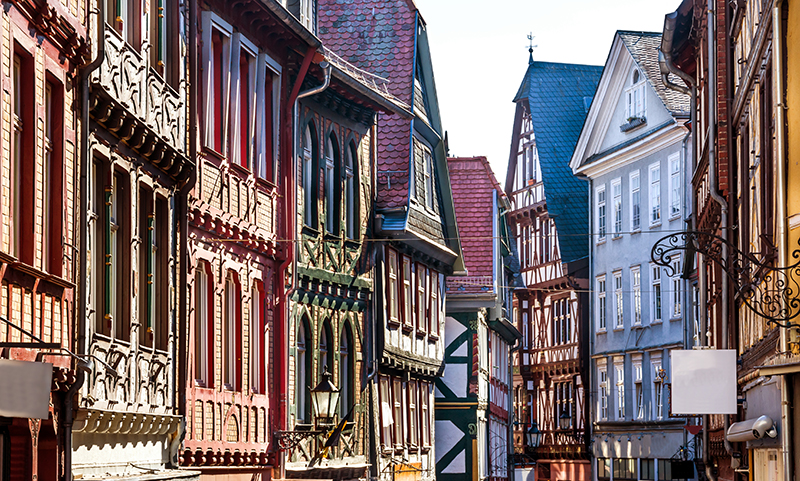Traveling Through Germany to Understand the Piety Movement of the 1830s
When most people think of traveling through Germany, their minds tend to wander toward fairy-tale castles, frothy steins of beer, the Autobahn, or maybe a hearty plate of schnitzel with a side of history. But travel — at least the kind I’m always chasing — isn’t just about seeing places. It’s about understanding the heartbeat of a people. It’s about standing where revolutions — both loud and quiet — were born.
And few stories whisper louder than that of the German Piety Movement of the 1830s.
This wasn’t some grand political uprising or royal power grab. No, this was something far more subversive — a revolution of the heart. And if you’re willing to get off the beaten path, to trade cathedrals for country chapels, and guidebooks for old journals, I’d argue there’s an epic exploration waiting to unfold across Germany’s quiet countryside.
What Was the German Piety Movement?
Picture early 19th-century Germany. The country (not yet united as a single nation) was reeling from the aftershocks of the Napoleonic Wars. Rationalism and Enlightenment thinking had taken root in the cities, and for many, faith had grown stale, stiff, and state-controlled.
But across smaller towns and rural villages, a grassroots revival was stirring — called Pietismus or Neo-Pietism. It was messy. It was raw. And it was deeply personal.
Men and women were gathering in homes instead of grand churches. They were studying scripture for themselves. They were living their faith outside the pews — feeding the poor, starting schools, building hospitals, and launching missionary movements that would reach far beyond German borders.
In a world obsessed with control, these were pockets of spiritual wildfire.
Why Travel to Understand It?
Because you simply can’t grasp the soul of the German Piety Movement from a book alone. You need to feel the chill of an early morning fog in Württemberg, where farmers gathered before dawn to pray. You need to sit in the wooden pews of a tiny chapel in Herrnhut, where Count Zinzendorf’s Moravians fanned the flames of missionary zeal. You need to walk the same dirt roads where Johann Christoph Blumhardt believed that ordinary people could wage spiritual battles in their everyday lives.
This is travel not for the sightseer — but for the seeker.
Where to Go: A Pietism Travel Itinerary Through Germany
1. Halle – The Birthplace of Practical Faith
Start in Halle (Saale), home to August Hermann Francke’s famed orphan houses and educational complex — a Pietist Disneyland long before such things existed.
Francke believed faith without action was dead. His complex included schools, printing presses, pharmacies, and missions support. Today, you can visit the Francke Foundations, which offer a rare glimpse into how one man’s faith rippled outward to change a city — and eventually, the world.
2. Herrnhut – The Moravian Marvel
Tucked away in Saxony, near the Czech border, Herrnhut is holy ground for anyone tracing the history of faith-driven community.
Founded by refugees and led by Count Nicolaus Zinzendorf in the early 1700s, by the 1830s Herrnhut was still pulsing with mission work and personal piety. Their 24-hour prayer movement lasted over 100 years — not bad for a little village in the hills.
Don’t miss:
-
The Moravian Museum
-
God’s Acre Cemetery
-
Their global mission exhibits
3. Württemberg – The Heartland of the 1830s Movement
This is where things really heat up. The region of Württemberg — particularly around Stuttgart, Tübingen, and the Swabian Alps — was the beating heart of Neo-Pietism.
Visit Korntal, founded as a religious community in 1819, still known for its quiet streets and spiritual heritage.
Explore Bad Boll, where Johann Christoph Blumhardt’s healing ministry challenged the norms of traditional religion.
Stay in rustic guesthouses, dine in family-run Gasthofs, and talk to locals — many of whom still trace their faith back to these humble movements.
4. Basel – The Missional Crossroads
Okay, I’m cheating a little here since Basel is technically in Switzerland. But its proximity to southern Germany makes it an essential stop.
Basel became a hub for mission work because of German Pietists, launching countless missionaries across the globe. The Basel Mission Archives are a treasure trove for anyone fascinated by how German faith spilled far beyond its borders.
5. Marburg – The Academic Side of Pietism
Not all Pietists shunned academia. The University of Marburg became a center for Pietist theology and scholarship in the 18th and 19th centuries.
Today, its medieval streets and stunning castle views offer a perfect reflection point for the tension between head and heart, knowledge and experience.
What to Expect Along the Way
Traveling in the footsteps of the German Piety Movement isn’t flashy. There are no mega-museums or busloads of tourists. This is slow travel at its finest — built around early morning walks, candlelit prayers, old hymns, and conversations over strong coffee and fresh bread.
You’ll meet pastors who still reference Blumhardt like he’s an old friend. You’ll find bookstores with dusty volumes of 19th-century sermons still proudly displayed. And you’ll come away with a deep appreciation for how ordinary people, stirred by extraordinary faith, quietly shaped history.
Final Thoughts: Why It Still Matters
In a world that often values spectacle over substance, the German Piety Movement is a reminder that revolutions often start small. They start in homes. In prayer. In the gutsy decision to live differently.
For travelers like us — seekers of more than just sights — this journey through Germany offers more than just a history lesson. It offers a chance to reflect on our own legacy.
What does it mean to live what we believe? What kind of story are we writing with our own travels, our own lives?
If you’re ready for that kind of adventure — one marked less by miles and more by meaning — then Germany’s backroads are calling.
And trust me, I wouldn’t steer you wrong.

Robert Riesmeyer is the visionary Founder and Experience Curator of Epic Explorations, a boutique travel company dedicated to crafting extraordinary journeys worldwide. Rooted in a passion for exploration, Robert brings a unique blend of creativity and commitment to every adventure, ensuring each experience is as unforgettable as the destinations themselves.
Originally from the Midwest, Robert left behind a career in insurance to pursue his dream of sharing the world's wonders with fellow travelers. With a focus on safety and an eye for the unexpected, he curates immersive experiences that allow travelers to connect deeply with the world, fostering curiosity, connection, and unforgettable memories.
Beyond his role in travel, Robert embraces the spirit of giving through his portrayal of Santa Claus, spreading joy to families and children during the holiday season. Through this role and Epic Explorations, he supports numerous charities, including Shadow Buddies, Mother's Refuge, Moving Ahead, Opertion Breakthrough and Santa America, bringing kindness and hope to those in need.
Based in Kansas City, Robert is constantly in search of new frontiers, dreaming big, giving back, and inspiring others to explore even bigger.


